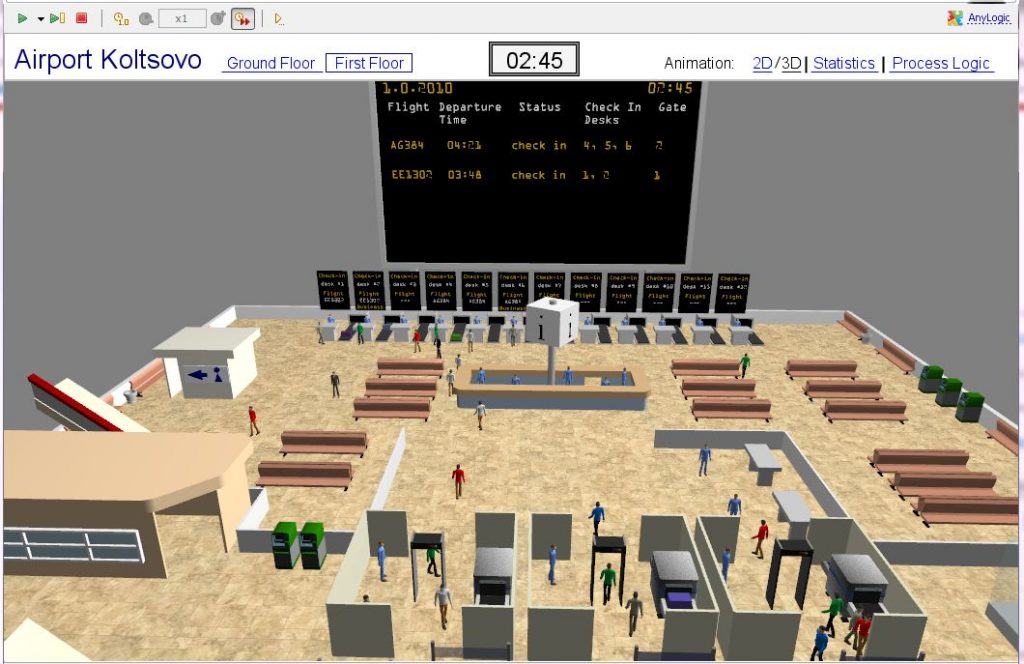Pedestrian flow simulation
Acceleration and evacuation scenarios are classic areas of application for pedestrian flow simulation. In particular, installations with great human density such as sports venues or stadiums are examined with regard to various damage events and the resulting necessities for the provision of paths and escape doors, taking into account real human behavior. People move according to the same scientifically verified rules, but depending on their immediate perceptible environment.
This results in individual patterns of movement which lead to macroscopic phenomena in a group which are hard to calculate. In this case, the simulation is used to ensure that the damage occurs during the most legally prescribed period. This is all the more important because such scenarios cannot be achieved with reasonable effort and realistic conditions, e.g. with actors. Therefore, simulation is often the only option.


Pedestrian flow simulation ensures satisfied customers and faster processes
The pedestrian flow simulation is also used to optimize service offerings and therefore to improve customer comfort. It is possible to determine the optimal occupancy of security controls or service switches in the run-up to pedestrian flow simulation, thus optimizing the use of personnel as well as the arrangement of the service points in order to increase the waiting times and the accessibility of services.
This allows the simulation to ensure that shopping centers or cafeterias are arranged in such a way that the customer can actually perceive the goods and positively influencing his purchase decision. This allows the simulation to optimize the frequency of POIs and thereby increase the quality of service.
In addition the simulation can help determine how many people can be admitted to a museum without forming queues in front of the exhibits within the museum. This means that visitors only stay in the museum to visit the exhibitions and save valuable time. This will provide more space for new visitors.
The following sentence applies: „Allow fewer people in at one time, and you will be able to have a larger throughput of visitors at the end of the day!” Only a simulation can determine the exact moment when to limit the inflow with certainty.
Pedestrian flow simulation example model
Subway Entrance Hall
Sie sehen gerade einen Platzhalterinhalt von Standard. Um auf den eigentlichen Inhalt zuzugreifen, klicken Sie auf den Button unten. Bitte beachten Sie, dass dabei Daten an Drittanbieter weitergegeben werden.
